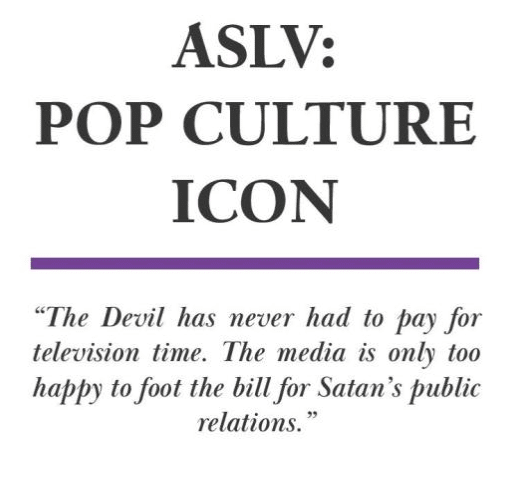‘This book is just a little collection of memories, a scrapbook, if you will. No book, however comprehensive, could do justice to, or fully encompass, this man’s life. This is a thumbnail sketch of the Anton LaVey I knew.’ (Boyd Rice)

I was surprised and interested to find out that a new book on LaVey was in the process of being written; like a lot of people my age, I probably discovered ASLV via the wave of artists and musicians who namechecked him in the nineties, speaking his name aloud because, in their own lives, they felt that they embodied key aspects of his Satanic philosophy. In this case, it was Marilyn Manson whom I first remember referencing the Church of Satan, leading to my personal ‘There’s a Church of WHAT?’ before reading LaVey’s own books, as well as the history-and-homage biography, The Secret Life of a Satanist, written by his partner Blanche Barton. Yet, since his death in 1997, the CoS has presided over a slew of defections and beg-to-differs, with new versions of Satanism popping up here, there and everywhere – some more notorious than others. To some extent jaded by all of this perhaps, the CoS has doubled down on its status as the only legitimate Satanism, insisting that only LaVey’s tenets pass muster and challenging the Satanic splinter groups for legitimacy. If I encounter the CoS these days, it’s largely on social media, particularly via their consistent line in Twitter snark. LaVey himself feels decidedly distant from all of this somehow.
Not so in Boyd Rice’s latest book. Whatever I was expecting, I think I was surprised, to a degree, by the clear warmth and affection here. Whilst I would not advise coming to this book prior to a getting a good handle on the other LaVeyan literature that’s out there, as a personal memoir this is interesting, very engaging and deeply respectful throughout. The distance in years between LaVey’s death and this ‘scrapbook’ emerging may have allowed ample time for reflection, but it certainly doesn’t seem to have diminished the sense of loss. This book deals with the man, rather than the archetype. Is it a ‘Last Testament’? No, not in any conventional sense, though it does present LaVey’s own words as well as the author’s and offers hitherto unseen material, as well as reprinted features. The result is a good read.

Firstly introducing how it came to be that Rice first met LaVey, the book next includes LaVey’s last interview, conducted by Rice in 1997. As Rice notes, this was at the stage in their friendship where they could very much finish one another’s sentences; in this lengthy interview, they talk about everything from music to tastes in women to pet hates. Next, there’s a chapter on LaVey’s fascination with true crime, and how his path crossed with the Black Dahlia case and, later, that most affable man of handicrafts, Ed Gein. An examination of how LaVey came to influence pop culture, with nods to his feted relationship with Jayne Mansfield, before a lurid study of what is here called the ‘Satanic zeitgeist’, that tendency to use Satanic imagery to flog anything from martinis to cologne, something which overlapped with the occult revival of the sixties and seventies.
The next inclusion originally appeared in the magazine The Black Flame in ’97: Rice’s obituary is detailed and well-rounded, giving a full picture of LaVey from the pranks to the heartfelt, mutual loyalty felt. A conversation with LaVey’s daughter Karla follows before the final chapters, which comprise an assemblage of LaVey quotes and, ultimately, Rice explaining his involvement with the Order of the Trapezoid, an esoteric order which Rice says LaVey personally asked him to head – although the (somewhat abstract) advertisement in the back would confirm that its establishment in this incarnation is actually very new. What’s next is uncertain, but the thread which joins LaVey’s initial request to the present moment is included and explained, even if some other aspects are less clear.
This lavishly-illustrated book isn’t here to deliver a potted history of Satanism then, and nor does it concern itself with all of the rather torrid revisions of LaVey’s personal history which have been doing the rounds since his death. I note one request for revision of certain facts has already appeared on the Amazon review page, and I imagine there’s always the potential for more wherever something or rather, someone so contentious is concerned. That kind of thing isn’t addressed here. Rather, this is a reverential tribute to a mentor, one which weaves anecdote and imagery to bring the man himself back to the fore. As such, it’s a welcome and timely addition to the canon.
